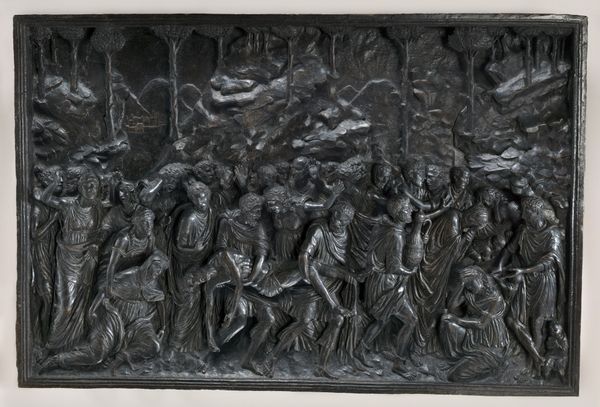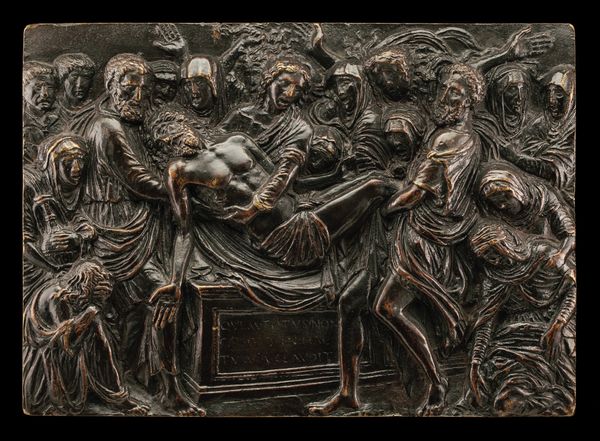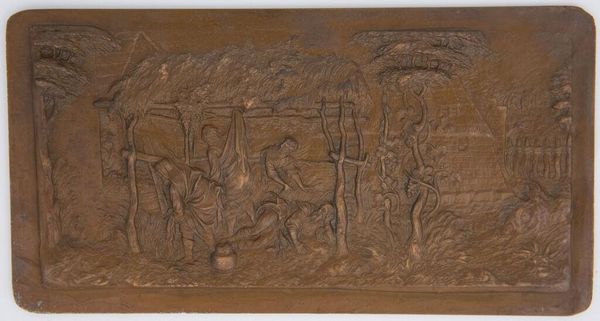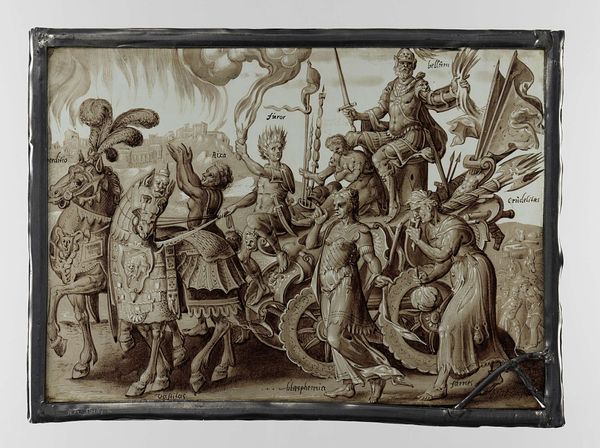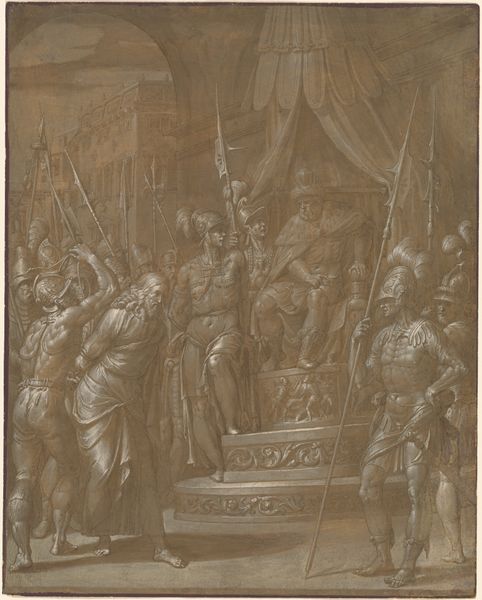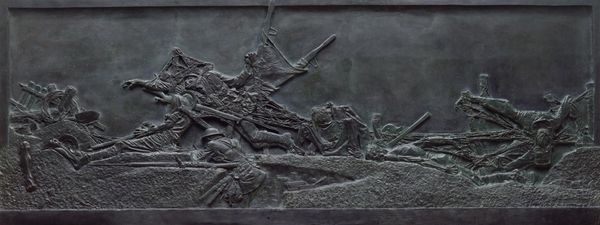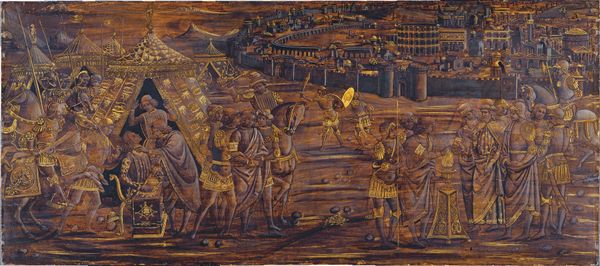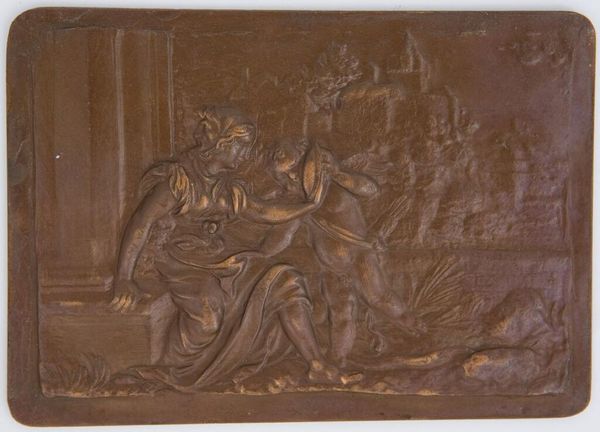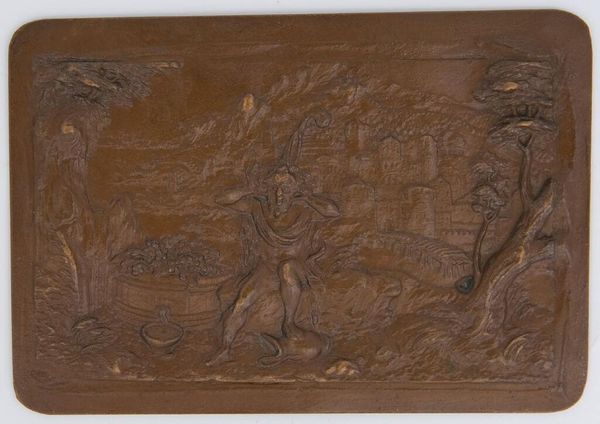
Copyright: Public domain
Editor: We're looking at "Return of Herman the Cherusker from the Battle at Teutoburg Forest," a wood carving in relief by Ludwig Manzel, from 1890. The dramatic lighting and intricate details create such a solemn, almost theatrical feel. What story do you see unfolding in this piece? Curator: Oh, absolutely theatrical! This isn't just history; it's a stage. The hero, Hermann, returns... but note how Manzel stages this triumph. There’s this profound mix of pride and despair. I imagine Manzel whispering to himself "how does one even carve out this victory." It seems less like a celebration and more like a moment laden with heavy choices. What catches your eye in terms of composition? Editor: I'm drawn to the division of the figures, with the triumphant return on one side and the grief-stricken people on the other. It is like two worlds co-existing. It creates a palpable tension. Curator: Exactly! Manzel sets up a dichotomy and plays with expectations of heroism. There is the obvious glorification, but Manzel embeds such nuanced and personal emotions of a complicated figure and situation. Notice, how each face, each gesture speaks volumes about individual burdens within a collective fate. Don’t you wonder what it was like back then? Editor: That makes me think about the romantic and nationalistic fervor of the late 19th century and how Manzel balances that with the human cost of war. Are we meant to admire Hermann, or to pity the people? Curator: Perhaps it's both. Great art seldom delivers simple answers, does it? It echoes across time. A historical drama, rendered not just in wood, but with an artistry that probes the depths of national identity and human experience. What an adventure, don’t you think? Editor: I hadn't thought of it quite that way. The artist captured so many conflicting emotions in one piece. Thank you for pointing out the nuances of the historical context.
Comments
No comments
Be the first to comment and join the conversation on the ultimate creative platform.
